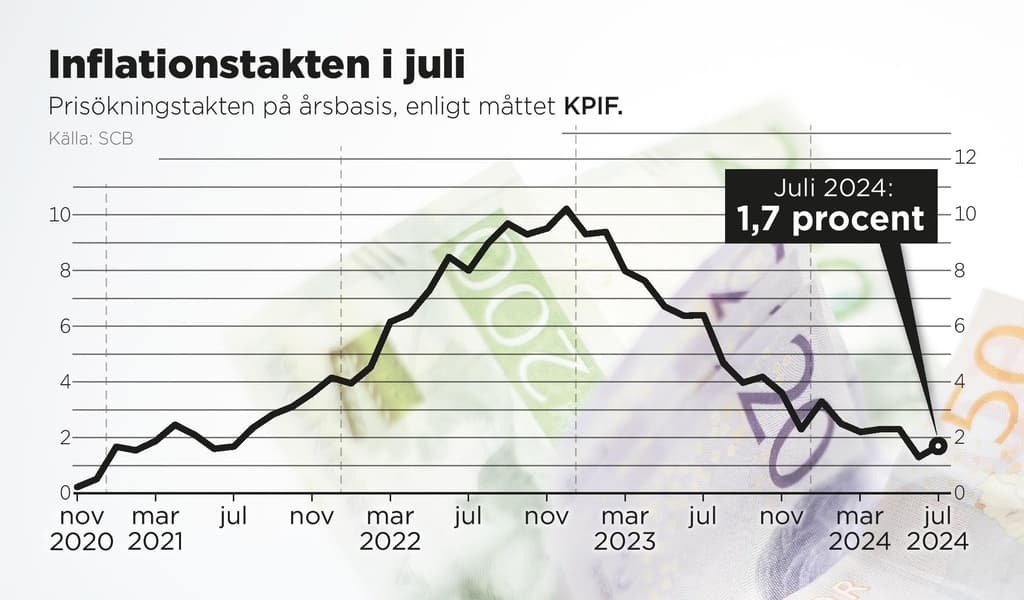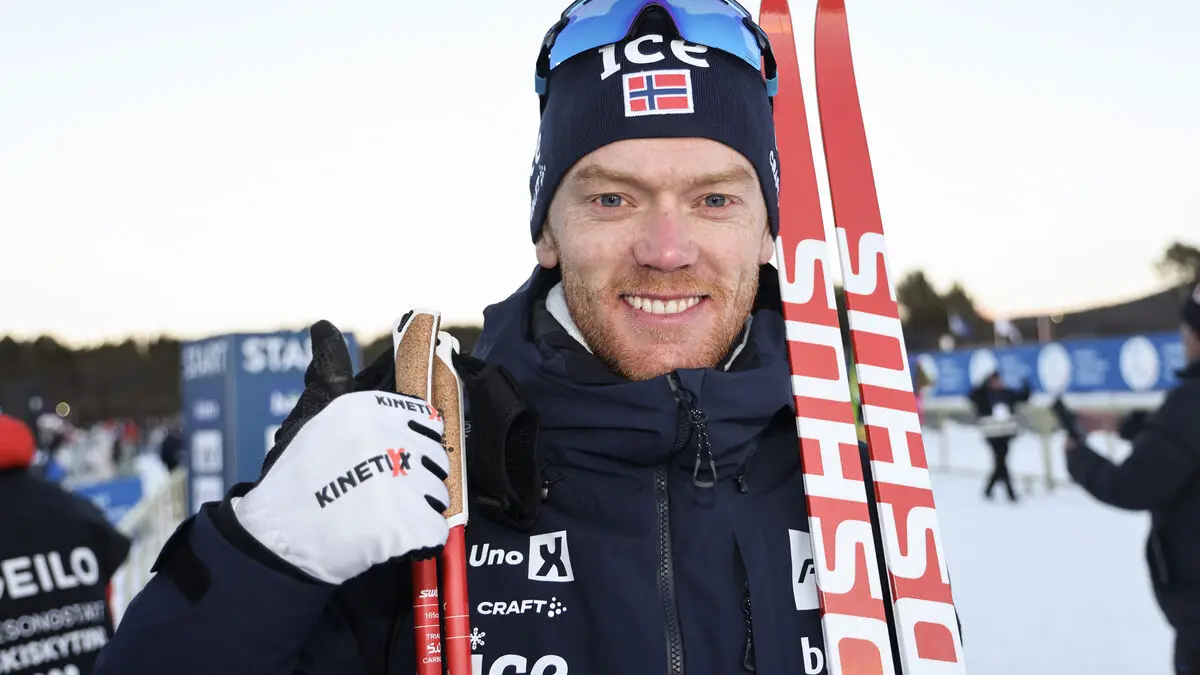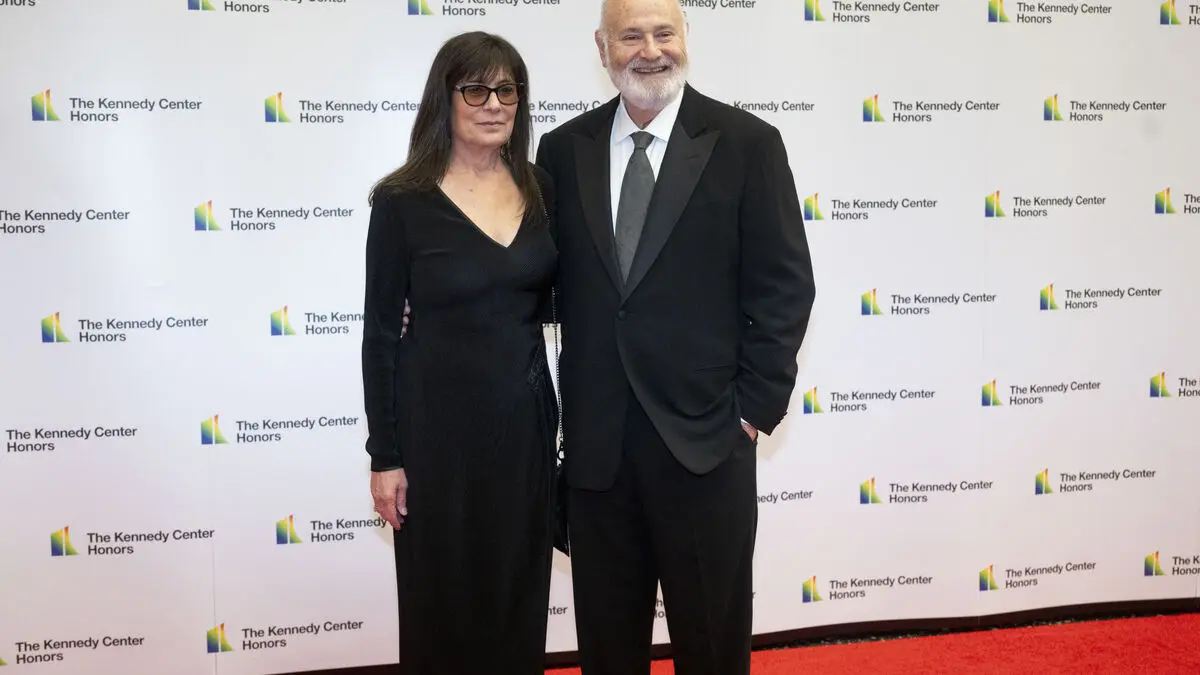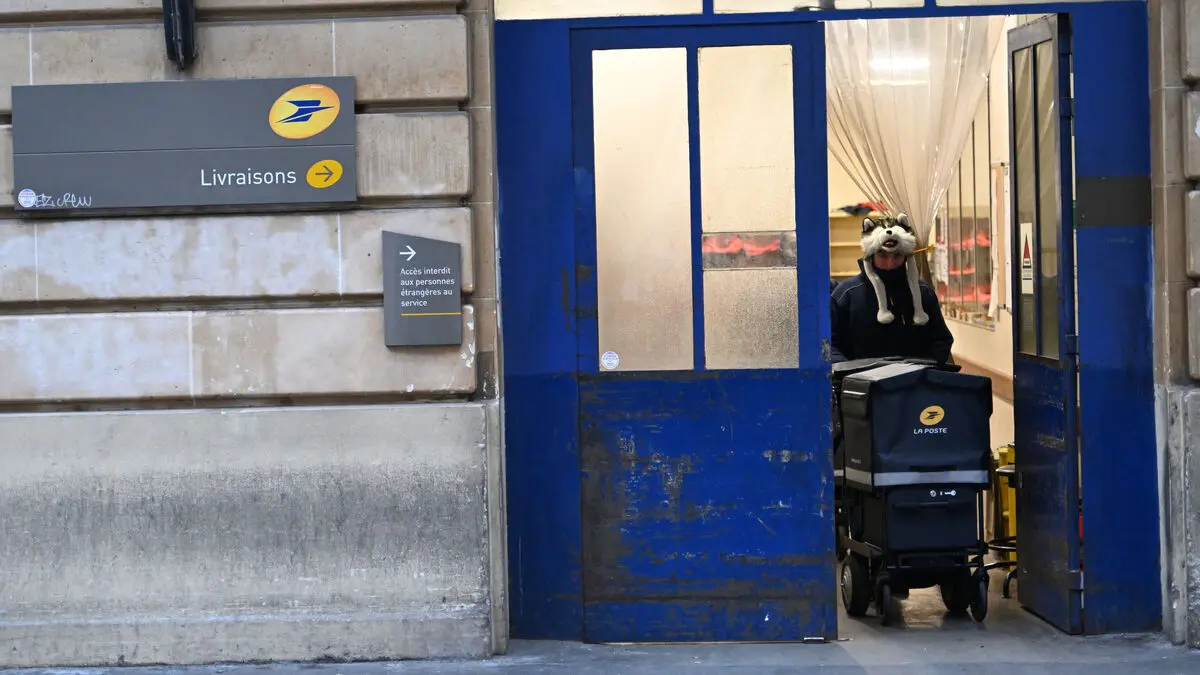Inflation in July rose to 1.7 percent according to the KPIF measure, according to Statistics Sweden (SCB). And it was slightly higher than economists' average forecast of 1.6 percent.
The picture is still clear, according to Nordea's chief analyst Susanne Spector. There will be an interest rate cut from the Swedish Central Bank next week by 0.25 percentage points to 3.50 percent. It's a safe bet.
Anything else would be a huge surprise, she says.
More in the Autumn
But a double cut (0.50 percentage points), which has been speculated about after last month's unexpectedly weak inflation outcome, is unlikely, according to her. Nor does Carl Nilsson, economist at Swedbank, believe in a double cut from the Swedish Central Bank:
I think it's completely ruled out.
Why?
Because the economy has developed roughly as the Swedish Central Bank has believed, primarily inflation and there is no reason for the Swedish Central Bank to deviate from the plan it has laid out.
On the other hand, more is expected in the autumn. And by the end of the year, the repo rate will be at 2.75 percent, according to Susanne Spector at Nordea.
I think it was a fairly undramatic outcome, which doesn't change the picture. The important thing is that it's the second month in a row that inflation is lower than the Swedish Central Bank's target, says Alexandra Stråberg, chief economist at Länsförsäkringar, who believes in three interest rate cuts during the rest of the year.
The fact that it's risen a bit more than expected compared to June's inflation doesn't worry Stråberg.
Summer-related
Now we've come down below 2 percent and then these monthly fluctuations play a smaller role. I think inflation will pendulate around these levels we're seeing now.
What's driving up inflation in July compared to June is summer-related price increases, according to Stråberg.
Food, package tours, restaurants, and hotels increased somewhat. Then there were a lot that went down in price, like clothing.
But there's something else that's still driving inflation.
"Housing costs continue to be the largest contributor to the inflation rate according to KPI, which was 2.6 percent in July", says Mikael Nordin, price statistician at SCB, in a press release.
In June, the KPIF inflation rate was 1.3 percent.
The KPIF inflation rate, which the Swedish Central Bank uses in its inflation target, is an underlying measure of inflation where the effects of mortgage rates have been excluded.
According to the KPI measure, inflation in July was 2.6 percent, the same level as the previous month. Here, analysts had expected an inflation rate of 2.5 percent.





